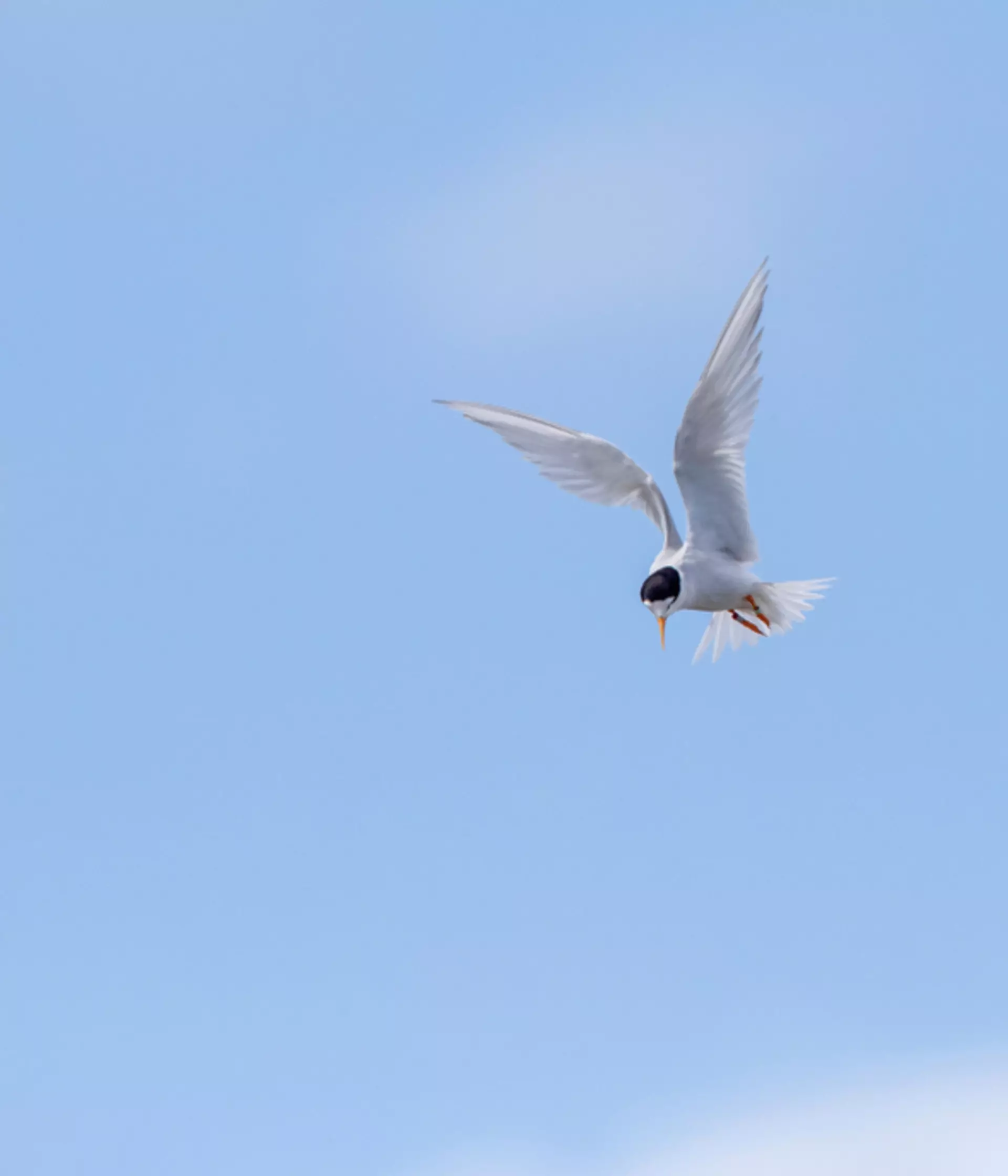The fairy tern is New Zealand’s rarest indigenous breeding bird. Each potential loss is vital, with fewer than 40 individuals remaining and just 9 breeding pairs left. The ZSL institute of Zoology is working together with our partners on the ground, to create routes to recovery. The Institute is closely involved in the Tara iti programme, providing scientific support to find practical actions to overcome the causes of fairy tern decline.
New Zealand’s rarest bird
This small, elegant tern inhabits coastal areas in Northern New Zealand and has only four remaining breeding sites. They favour sandy beaches with patches of shell and little vegetation, laying 1-2 eggs directly in the sand in a scrape. Conservation management began in 1983, when there were just three known pairs. New Zealand government’s Department of Conservation (DOC) began monitoring the population, controlling ground predators and using wardens and signage to protect nests with increasing intensity. From 1998 onwards, egg management was also employed, with abandoned eggs incubated at Auckland Zoo and placed under foster pairs. Numbers improved and the population increased to 8-10 pairs. Whilst these interventions have undoubtedly benefited tara iti, in the last 15 years, the population has plateaued.
Fairy tern threats
As ground nesting birds, fairy terns are especially vulnerable to a mix of threats. The eggs, chicks and adult birds are easy prey for introduced mammals (e.g. rats, mustelids, cats) and, like other terns, they are highly sensitive to disturbance from human activity at its breeding sites. There has been degradation and loss of its breeding habitat due to extensive coastal development, and breeding attempts are vulnerable to tidal and extreme weather events. Although all pairs are attempting to breed, the sex ratio is currently biased towards males, leaving many unpaired males each season, and the population has a very low egg hatch rate.
Fairy tern conservation
There is serious concern about how vulnerable this population still is to extinction. DOC is committed to review its management, write a new recovery plan and improve the cohesion of work for tara iti amongst all those concerned with the plight of this bird. Together with our partners, we have implemented a Structured Decision Making (SDM) approach for recovery planning, to find the best practical route to recovery.
Our impact
The development of a new species recovery programme
Establishment of camera trapping protocol for nest monitoring
One PhD studentship
Partners: Department of Conservation; University College London
Sponsors: NERC; London NERC DTP; The Te Arai and Mangawhai Shorebirds Trust
Urgent action to help people and wildlife live better together is the only way to save the natural world we love and depend upon. That’s where ZSL comes in, and where you can play your part.
